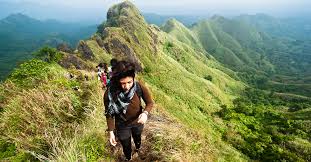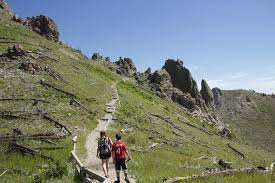The best mountaineering hacks for beginners
There are no “hacks” in mountaineering and climbing for beginners. Shortcuts are what get people in trouble. Climbing is full of seemingly pointless little rituals that seek to avoid the million in one chance event. Trying to avoid the hard work, and commitment goes against the entire ethos of mountaineering.
The best “hack” you can do is take courses taught by IFMGA professionals. I've learned mostly through clubs and mentors and I've learned a lot of things that were kinda right, incomplete, or outright wrong. What I've learned from guides is way more thorough, clear and of course, is guaranteed best practice. Courses and time with guides are as close as you will get to shortcuts that don't endanger you.
If you want to get stronger then walk everywhere. Stand at desks don’t sit. Train a lot at zone 1 heart rate (Training for the New Alpinism has a lot of good information regarding this). Walk upstairs with a full pack every day. You’ll get faster pretty quick. Climb lots of easy routes. Practice on getting faster at climbing routes then climbing harder routes. Run hard and far at least once a week. If you don’t enjoy pushing hard when you are in pain and uncomfortable then you will never get far mountaineering. Learn to love the suck.

There is a list of tricks and tips one could show you, but if you don't have someone to correct you if you get it wrong (which everyone does the first and second time they try) it would just make things dangerous for you.
Here is the advice I can offer if you’re new:
Choose mentors carefully
Don't buy equipment until you've developed your own preferences: beg, borrow, and rent
Don't eat junk foods on big days. You crash faster.
Boots should be your first purchase. Everything else is easy to borrow. Consider aftermarket insoles like superfeet.
Dryland practice is always a good idea. A rock rescue course will teach you a ton of useful tricks that are super handy.
Take an Avalanche Safety Training course. It's not generally relevant to classic mountaineering, but the risk assessment skills and emergency response procedures are great.
Mountaineering - Petzl has some of the best resources online. One important thing to note: I have never seen anyone get any technique 100% correct. Having a qualified individual correct your mistakes is essential. Look at this as recommended reading, not a substitute.
Prepare everything the night before if you’re starting early. Coil ropes, and pack strategically. Make sure items are stacked chronologically. I.e. Layers on top for moving in the cold in the morning, water bottle beneath that, harness, and rack for getting to the base of the route, rope underneath if you’re pack coiling it.
Count every gram. Seriously. Every 60grams could mean an extra 250 calories.
Edit: Jon Petersons excellent answer reminded me there are plenty of hacks I have missed. But none are for beginners. You should have a level of expertise before working on these things.

On alpine starts always position your stove, food, and most importantly coffee, close at hand. That way you can start the stove and get cooking immediately and stay warm in your sleeping bag.
Mountainweatherforecast.com and SpotWX are excellent resources for checking the weather.
The online mapping app, MapBox is one of the most detailed mapping software out there short of British OS maps. Movescount, Avalanche.ca, and AllTrails use this system. If you buy premium AllTrails it even lets you print the maps out.
If you are staying in a hut, Jon is right, but this is worth repeating, bring earplugs! I keep a set of all my sleeping bags.
Abalakovs aren’t just useful in winter. Even in summer, they can be really handy if you run out of ice screws for an anchor.
Always have 5m of 6mm cord. It’s incredibly useful for nearly everything.
Take one more wire gate, and one more screwgate then you think you’ll need.
Eating snacks out of your pockets is way more efficient than a full lunch. Plan accordingly.
A short (180cm) avalanche probe is awesome to have on covered glaciers to check snow depth and probe for crevasses from a distance.
If you’re climbing on cold rock, a chemical handwarmer in a chalkbagbags really well.
Pack your gear into colour coded dry bags. Makes packing and unpacking easier.
Nail polish makes decent tape markers. Use at least two colours. Do it for everything you own, even tools. Makes them a little harder to loose.
Ditch the “brain” on your pack. You’ll notice most packs are moving away from the traditional brain style packs. These get in the way of a helmet.
Learn to “French free”, basically using aid techniques to move quickly through tough sections. In the alpine speed is key so working the crux is just not an effective use of time.
Always carry a tarp of some kind. They are super useful for bivies, short breaks, or emergency carry.
Take your mountaineering boots to the gym or crag and climb in them. Scramble in them too
Collapsible poles are great for ascents and for the descent. I often use an ice axe and pole together.
5 metres of 6mm cord, and an HMS screwgate open up a world of possibilities. I learnt a lot on my improvised rock rescue course.
Tea with lot’s of milk and sugar. Especially when it’s cold it just makes you feel so much better.
Before you go up a route, take a break. Investigate the route and try and imagine how it will look when you get there. Do your route finding from bellow first. It saves a lot of time higher up.
Stretch before you start the day.
I’ll add more as they come to mind.